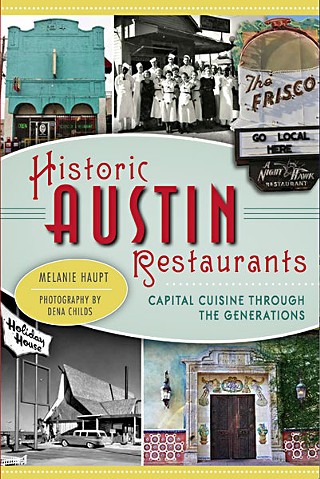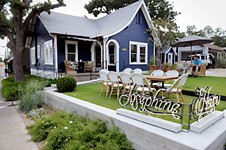The Way We Ate
'Historic Austin Restaurants': an excerpt
Fri., Nov. 1, 2013
In her newly published Historic Austin Restaurants: Capital Cuisine Through the Generations, longtime Austin Chronicle contributor Melanie Haupt traces the history of Austin through the lens of its iconic restaurants and dining trends. When we asked Melanie for an excerpt from her book, she chose a passage on the evolution of campus-area eating in the Nineties, explaining, "Because my entrance into the Austin restaurant scene was via UT and the Drag, the changes in this particular area are particularly poignant."
The 1990's: Slackers and Techies and Rising Rents
Back in the '80s and '90s, the Drag was a grubby, slightly seedy ten-block shopping strip flanking the west side of the University of Texas, with many structures dating back to the 1920s and earlier. Prominently featured in Richard Linklater's 1991 film, Slacker, the Drag was studded with locally owned shops beloved by a generation of UT alumni. Sound Exchange, a tiny record store with impeccable music-geek cred on the corner of 20th and Guadalupe, swelled with vinyl treasures, band T-shirts and posters. Up the street, the Varsity Theater housed a single-screen movie theater from 1936 to 1990; it now houses a Noodles & Company and a Coffee Bean & Tea Leaf. True slackers wiled away the hours at Einstein's and Le Fun, two old-school video arcades; both spots fell victim to rising rents on Guadalupe in the mid-2000s. For the young and caffeinated, there was Captain Quackenbush's Intergalactic Dessert Company and Espresso Cafe.
Opened by Art Silver in 1983, Quack's claims to have been the first coffee shop in Austin. At first, the cookie bakery only served espresso-based coffee drinks, a European conceit unheard of in 1980s Austin; Silver eventually relented and added drip coffee to the menu. In 1998, he opened a second location in the Hyde Park neighborhood, expanding the bakery operation to include a wide array of scratch-baked goods, from wholesome salty oat cookies to decadent chocolate peanut butter ganache cake. The following year, the cost of maintaining the Guadalupe location became unmanageable, so Silver shuttered the iconic spot and focused his energies on Quack's 43rd Street Bakery, where the shaggy aesthetic of the original location lives on.
Another notable, lost location on the Slacker map, Mad Dog & Bean's was a run-down burger stand on the cusp of West Campus that looked like something you'd see in a stereotype-heavy film about Appalachia. It was cheap and innovative, with offerings like the Primo burger, a quarter-pound burger blended with bacon, jalapeños and onions, then grilled and topped with melted cheese. Mad Dog & Beans was part of the daily landscape of generations of UT students. Sadly, tax problems, multiple run-ins with the health department, and rising property values spelled the iconic shack's demise, and it was shuttered in the mid-'90s.
Perhaps the most deeply mourned victim of the 1990s "face-lift" undergone by the Drag and nearby blocks is Les Amis, a scruffy little Parisian-style cafe, replete with plastic lawn chairs and wire-spool tables, that served as a miniature cultural center in its own right. Not only could students pop in for a cheap lunch of beans and rice, they could also study over cigarettes and cappuccinos or, as history has borne out, plot some of American (or at least Texan) culture's most beloved products.
While the restaurant opened in 1970 and enjoyed the patronage of movie stars and hosted scorching punk shows in its first two decades, Les Amis was effectively ground zero for the early '90s Slacker culture that defined Austin's burgeoning national profile. Richard Linklater wrote part of the script and shot a few scenes for the iconic film at the cafe. The earliest meetings of the Austin Film Society took place at Les Amis; since then, the city has become as well known for its film culture as for its music scene.
To the chagrin of the university, arts and local community, Les Amis closed in July 1997. Today, what was once known as Bluebonnet Plaza, which also housed record stores, smoke shops and the muckraking Texas Observer, is home to, among other things, a Starbucks, a Smoothie King and a tanning salon.
This excerpt is from the book Historic Austin Restaurants: Capital Cuisine Through the Generations by Melanie Haupt. Reprinted by permission of The History Press. All rights reserved.









